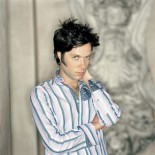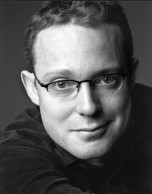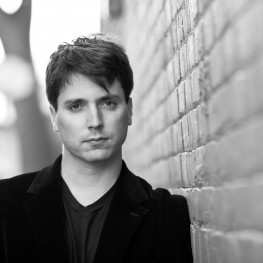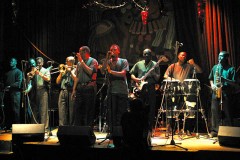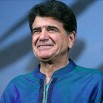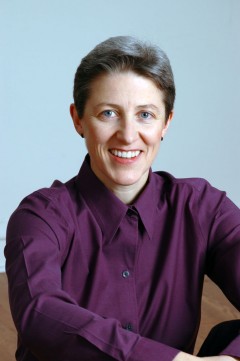Summer Traditions
As I sit down to produce this final column before The Wholenote’s summer break, I’m in the throes of recovery from the weekend of June 12-13. It started with a dress rehearsal on Saturday afternoon followed by a performance of Beethoven’s Fifth Symphony in the evening with the Kindred Spirits Orchestra. Sunday started with “The World’s Biggest Brass Event” for the International Women’s Brass Conference (IWBC). Then it was off to an end-of-season garden party for another musical group. Before long I had to leave the party early for another orchestral rehearsal of Grieg’s Piano Concerto and Sibelius’s Violin Concerto.
 I switched from bass trombone in the Beethoven to an antique Soviet Army rotary valve baritone horn in the Colonel Bogey march at the IWBC. I also went from a tuxedo on Saturday to a T-shirt on Sunday, and from The Glenn Gould Studio Saturday to a grassy slope at the Humber College Lakeshore Campus for the IWBC. It certainly was a weekend of variety!
I switched from bass trombone in the Beethoven to an antique Soviet Army rotary valve baritone horn in the Colonel Bogey march at the IWBC. I also went from a tuxedo on Saturday to a T-shirt on Sunday, and from The Glenn Gould Studio Saturday to a grassy slope at the Humber College Lakeshore Campus for the IWBC. It certainly was a weekend of variety!
Now let’s take a very unscientific look at what community musical groups have planned for the summer months.
There may be the odd performance in a summer festival, but, with few exceptions, most community orchestras and choirs take a break during the summer months. Not so for community bands. A century ago, before radio and television, the “town band” was a principal source of musical entertainment for most communities in our part of the world. From its construction in 1936, for the next 40 or so years, the Main Bandshell at Toronto’s CNE featured twice-daily concerts by famous bands from around the world. In between those there were concerts by local bands, there and on the North Bandstand. I remember well the Bands of the Royal Marines and the National Band of New Zealand. All summer long there were weekly band concerts in Toronto at Kew Gardens, High Park, Allen Gardens and St. James Park. Similar concerts on a smaller scale took place in most smaller communities.
How have community bands changed? How do today’s bands perceive their roles? While some community bands do close down for a while, many simply switch to an annual summer agenda, with more emphasis on outdoor performances. So I’ve decided to look at the four modern community bands of my acquaintance, to see how each has evolved with the changing times.
The oldest of these bands is the Newmarket Citizens Band. Having operated continuously for over 100 years, it’s not surprising that this band’s activities most closely resemble those of the town band when they were first formed. They play regular outdoor concerts in a variety of venues and play for many parades for which they frequently receive honoraria. The proceeds of these have been sufficient for the band to purchase, at no expense to the members, a complete set of new blazers with embroidered crests. In appearance, this band most closely adheres to its traditional roots.
The Concert Band of Cobourg is an excellent anomaly among community bands, both in appearance and activities. A good many years ago the town band in Cobourg was struggling. Then a new resident with a solid band background moved to town. Roland White (“Roly,” as he is known), had for many years served in bands of the Royal Marines, and studied conducting under Sir John Barbirolli. Having brought many of the traditions of the Royal Marines with him, the band was adopted as the official band of Her Majesty’s Royal Marines Association, Ontario, and subsequently obtained Royal permission to wear a uniform closely resembling that of the Royal Marines. Some years ago, ill health forced White to retire and hand the reins over to Paul Storms, who carries on the tradition admirably.
Every year the band travels to Plattsburgh NY in September for the Battle of Plattsburgh Commemorative Weekend. As part of that celebration, they will be performing September 11 in a parade, beat retreat ceremony and evening concert. Once again this summer, from July 6 through to August 31, they will perform their summer-evening concert-series in the Victoria Park Bandshell in Cobourg. As with the Newmarket Band, this group participates regularly in parades and other ceremonial events.
The Markham Concert Band was organized 32 years ago by a group of local residents who had a common desire to make music. A few charter members are still active in the band. Unlike traditional town bands, this group has never participated in parades. They do, however, take part in a wide range of community activities. As of this writing, they already have commitments for 12 events this summer, ranging from a Main Street Festival to a concert at the Orillia Aquatheatre. As for uniforms, they are much less formal. In winter it’s a dark green sweater with an embroidered logo, and in summer it is a golf shirt with the same logo.
The Uxbridge Community Concert Band had its origins 19 years ago and bears little resemblance to the town bands of yesteryear. It is a summer-only band, operating only during the months of June, July and August. Founded initially to provide an opportunity for high school students to continue playing during the summer, it has evolved over the years to include a core group of adult players who return each summer. In addition, many of the original students return each year when they are home on vacation from university. As for uniform, each member receives a T shirt with a new musical motif each year on payment of their dues. They do not parade, but do play for one Decoration Day ceremony for the local branch of the Royal Canadian Legion. To encourage the development of the talents of the younger members, there is within the band a smaller wind ensemble which rehearses one special challenging selection each summer. This band is a welcome addition to the summer life of the community – but it’s quite unlike the town band of old.
Enjoy your summer of music, whatever your taste in bands!
Definition Department
This month’s lesser known musical term is: DILL PICCOLINI, “an exceedingly small wind instrument that plays only sour notes.” We invite submissions from readers.
Coming Events
July 18-August 21: National Band of the Naval Reserve will be performing a series of concerts in various locations throughout Southern Ontario as part of the celebrations commemorating the 100th anniversary of the establishment of the Royal Canadian Navy.
August 8 7:00: Northdale Concert Band with conductor Graziano Brescacin presents a concert at the Upper Queen’s Park Bandshell, Stratford, Ontario. Free admission.
August 15 12:30pm: Northdale Concert Band with conductor Graziano Brescacins present a matinee concert at the Events Pavilion, Black Creek Pioneer Village, 1000 Murray Ross Parkway, Toronto. Concert is free with park admission.
August 15 6:30: Markham Concert Band with conductor Doug Manning performs at the Aquatheatre, Couchiching Beach Park, Orillia
August 22 6:30: Newmarket Citizens Band with conductor Les Saville perform at the Aquatheatre, Couchiching Beach Park, Orillia
August 29 12:30: Newmarket Citizens Band with conductor Les Saville presents a matinee concert at the Events Pavilion, Black Creek Pioneer Village, 1000 Murray Ross Parkway, Toronto. Concert is free with park admission.
September 5: Northdale Concert Band with conductor Graziano Brescacin performs at the Aquatheatre, Couchiching Beach Park, Orillia.
Jack MacQuarrie plays several brass instruments, and has performed in many community ensembles. He can be contacted at: bandstand@thewholenote.com.


 The original bandleader was Cliff (“Kid”) Bastien, and his Saturday afternoon residence at Grossman’s began when, in 1970, then-owner Al Grossman hired the young trumpeter and his Camelia Band, later called Kid Bastien’s Happy Pals, to perform every Saturday. Apart from a short period around 1980, Kid played there until his death in February 2003. But the band, now led by Patrick Tevlin, still plays New Orleans jazz to a faithful following.
The original bandleader was Cliff (“Kid”) Bastien, and his Saturday afternoon residence at Grossman’s began when, in 1970, then-owner Al Grossman hired the young trumpeter and his Camelia Band, later called Kid Bastien’s Happy Pals, to perform every Saturday. Apart from a short period around 1980, Kid played there until his death in February 2003. But the band, now led by Patrick Tevlin, still plays New Orleans jazz to a faithful following.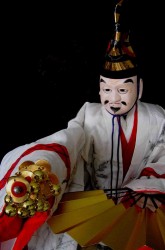
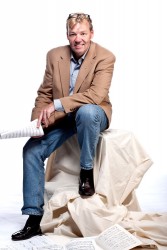
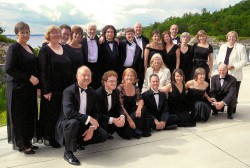
 On July 8, CBC Radio 2, the National Gallery of Canada and Music and Beyond will unveil the results of their Gallery Project – the culmination of a national contest to choose five works of art from the Gallery to inspire new compositions. The programme includes works by a cross-country collection of Canadian composers, including Jocelyn Morlock, Denis Bédard, Michael Conway Baker, Colin Mack, Scott Macmillan, Elizabeth Raum and Kelly-Marie Murphy. The following day, Music and Beyond partners with the Ottawa New Music Creators to celebrate local composers Gabor Finta, Steven Gellman and Patrick Cardy at the Church of St. John the Evangelist. Across both days, the National Arts Centre Orchestra will open its afternoon rehearsals to the public with two new music reading sessions. Conductor Gary Kulesha will lead the orchestra in explorations of new orchestral works by both emerging and established Canadian composers. For full Music and Beyond festival details, and to purchase passes, visit www.musicandbeyond.ca.
On July 8, CBC Radio 2, the National Gallery of Canada and Music and Beyond will unveil the results of their Gallery Project – the culmination of a national contest to choose five works of art from the Gallery to inspire new compositions. The programme includes works by a cross-country collection of Canadian composers, including Jocelyn Morlock, Denis Bédard, Michael Conway Baker, Colin Mack, Scott Macmillan, Elizabeth Raum and Kelly-Marie Murphy. The following day, Music and Beyond partners with the Ottawa New Music Creators to celebrate local composers Gabor Finta, Steven Gellman and Patrick Cardy at the Church of St. John the Evangelist. Across both days, the National Arts Centre Orchestra will open its afternoon rehearsals to the public with two new music reading sessions. Conductor Gary Kulesha will lead the orchestra in explorations of new orchestral works by both emerging and established Canadian composers. For full Music and Beyond festival details, and to purchase passes, visit www.musicandbeyond.ca. Thinking of going on an early music treasure hunt this summer? Here are some ideas for you.
Thinking of going on an early music treasure hunt this summer? Here are some ideas for you.